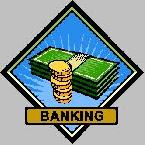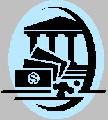
 |
|
| Financial Terms | |
| Business Cycle |
|
Information about financial, finance, business, accounting, payroll, inventory, investment, money, inventory control, stock trading, financial advisor, tax advisor, credit.
Main Page: stock trading, accounting, money, finance, inventory, investment, payroll, credit, |
Definition of Business Cycle
Business CycleFluctuations of GDP around its long-run trend, consisting of recession, trough, expansion, and peak. Business cycleRepetitive cycles of economic expansion and recession.
Related Terms:Political Business CycleA business cycle caused by policies undertaken to help a government be re-elected. Real Business Cycle TheoryBelief that business cycles arise from real shocks to the economy, such as technology advances and natural resource discoveries, and have little to do with monetary policy. Group rotation managerA top-down manager who infers the phases of the business cycle and allocates Yield curveThe graphical depiction of the relationship between the yield on bonds of the same credit quality Fiscal yearA 12 month period over which a company reports on the activities that BoomThe expansionary part of a business cycle in which GDP is growing rapidly.  Implicit ContractAn unwritten understanding between two groups, such as an understanding between an employer and employees that employees will receive a stable wage despite business cycle activity. PeakThe upper turning point of a business cycle, where expansion turns into a contraction. TroughThe lower turning point of a business cycle, where a contraction turns into an expansion. Turning PointThe trough or peak of a business cycle. Basic business strategiesKey strategies a firm intends to pursue in carrying out its business plan. Business failureA business that has terminated with a loss to creditors. Business riskThe risk that the cash flow of an issuer will be impaired because of adverse economic Cash conversion cycleThe length of time between a firm's purchase of inventory and the receipt of cash Cash cycleIn general, the time between cash disbursement and cash collection. In net working capital  Expiration cycleAn expiration cycle relates to the dates on which options on a particular security expire. A Market cycleThe period between the 2 latest highs or lows of the S&P 500, showing net performance of a Operating cycleThe average time intervening between the acquisition of materials or services and the final Product cycleThe time it takes to bring new and/or improved products to market. Replacement cycleThe frequency with which an asset is replaced by an equivalent asset. Budget cycleThe annual period over which budgets are prepared. Lifecycle costingAn approach to costing that estimates and accumulates the costs of a product/service over business intelligence (BI) systema formal process for gathering and analyzing information and producing intelligence to meet decision making needs; requires information about business process reengineering (BPR)the process of combining information technology to create new and more effective business-value-added activityan activity that is necessary for the operation of the business but for which a customer would not want to pay cycle timethe time between the placement of an order to  Internet business modela model that involves life cycle costingthe accumulation of costs for activities that manufacturing cycle efficiency (MCE)a ratio resulting from dividing the actual production time by total lead time; product life cyclea model depicting the stages through cash conversion cyclePeriod between firm’s payment for materials operating risk (business risk)Risk in firm’s operating income. Payroll CycleThe period of service for which a company compensates its employees. Cycle countingThe frequent, scheduled counting of a subset of all inventories, Business Expansion InvestmentThe use of capital to create more money through the addition of fixed assets or through income producing vehicles. Cash CycleThe length of time between a purchase of materials and collection of accounts receivable generated by the sale of the products made from the materials. High-Risk Small BusinessFirm viewed as being particularly subject to risk from an investors perspective. Commercial Business Loan (Credit Insurance)An agreement between a creditor and a borrower, where the creditor has loaned an amount to the borrower for business purposes. build missiona mission of increasing market share, even at harvest missiona mission that attempts to maximize shortterm Related to : financial, finance, business, accounting, payroll, inventory, investment, money, inventory control, stock trading, financial advisor, tax advisor, credit. |